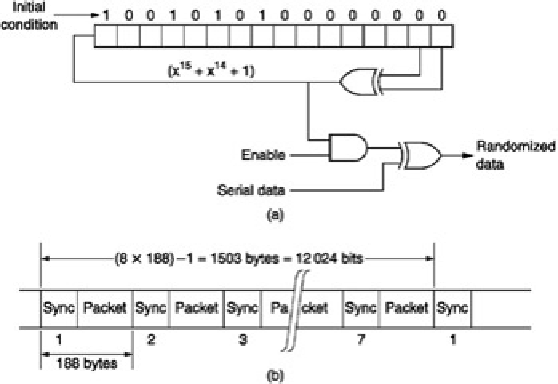Information Technology Reference
In-Depth Information
Figure 7.8:
In 64-QUAM, two carriers are generated with a quadrature relationship. These are independently
amplitude modulated to eight discrete levels in four quadrant multipliers. Adding the signals produces a QUAM
signal having 64 unique combinations of amplitude and phase. Decoding requires the waveform to be sampled in
quadrature like a colour TV subcarrier.
The data bit patterns to be transmitted can have any combinations whatsoever, and if nothing were done, the
transmitted spectrum would be non-uniform. This is undesirable because peaks cause interference with other
services, whereas energy troughs allow external interference in. A randomizing technique known as energy
dispersal is used to overcome the problem. The signal energy is spread uniformly throughout the allowable channel
bandwidth so that it has less energy at a given frequency.
A pseudo-random sequence (PRS) generator is used to generate the randomizing sequence.
Figure 7.9
shows the
randomizer used in DVB. This sixteen-bit device has a maximum sequence length of 65 535 bits, and is preset to a
standard value at the beginning of each set of eight transport stream packets. The serialized data are XORed with
the sequence, which randomizes the output that then goes to the modulator. The spectrum of the transmission is
now determined by the spectrum of the PRS.
Figure 7.9:
The randomizer of DVB is pre-set to the initial condition once every eight transport stream packets. The
maximum length of the sequence is 65 535 bits, but only the first 12 024 bits are used before resetting again (b).


